Applicability of Machine Learning and Mathematical Equations to the Prediction of Total Organic Carbon in Cambrian Shale, Sichuan Basin, China
Abstract
1. Introduction
2. Study Area
3. Logging Response Characteristics
3.1. Natural Gamma Ray Logging
3.2. Acoustic and Density Logging
3.3. Resistivity Logging
3.4. Comparative Analysis
4. Machine Learning Algorithms
4.1. Data Preprocessing
4.1.1. Parameter Selection for Model Training
4.1.2. Data Calibration
4.1.3. Data Normalization
4.1.4. Dataset Construction
4.2. Model Construction
5. Results and Discussion
5.1. Introduction to Methods
5.1.1. ΔlogR for TOC Prediction
5.1.2. MAJI for TOC Prediction
5.2. Result Comparison
5.3. Future Directions
6. Conclusions
Author Contributions
Funding
Institutional Review Board Statement
Informed Consent Statement
Data Availability Statement
Conflicts of Interest
Abbreviations
| TOC | Total Organic Carbon |
| DW-RFR | Dynamic Weighting–Calibrated Random Forest Regression |
| LWD | logging-while-drilling |
| PCA | Principal Component Analysis |
| SHAP | Shapley Additive Explanations |
| VIF | Variance inflation factor |
| RMSE | root mean square error |
| MAJI | Multi-Attribute Joint Inversion |
References
- Guo, X.; Wang, R.; Shen, B.; Wang, G.; Wan, C.; Wang, Q. Geological characteristics, resource potential, and development direction of shale gas in China. Pet. Explor. Dev. 2025, 52, 17–32. [Google Scholar] [CrossRef]
- Fan, C.; Li, H.; Qin, Q.; He, S.; Zhong, C. Geological conditions and exploration potential of shale gas reservoir in Wufeng and Longmaxi Formation of southeastern Sichuan Basin, China. J. Pet. Sci. Eng. 2020, 191, 107138. [Google Scholar] [CrossRef]
- Kong, J.; Hu, Y.; Yang, L.; Shan, Z.; Wang, Y. Estimation of evapotranspiration for the blown-sand region in the Ordos basin based on the SEBAL model. Int. J. Remote Sens. 2019, 40, 1945–1965. [Google Scholar] [CrossRef]
- Briggs, M.A.; Lautz, L.K.; Buckley, S.F.; Lane, J.W. Practical limitations on the use of diurnal temperature signals to quantify groundwater upwelling. J. Hydrol. 2014, 519, 1739–1751. [Google Scholar] [CrossRef]
- Ahmed, S.A.; MonaLisa; Hussain, M.; Khan, Z.U. Supervised machine learning for predicting shear sonic log (DTS) and volumes of petrophysical and elastic attributes, Kadanwari Gas Field, Pakistan. Front. Earth Sci. 2022, 10, 919130. [Google Scholar] [CrossRef]
- Wang, H.; Liang, Q.; Hancock, J.T.; Khoshgoftaar, T.M. Feature selection strategies: A comparative analysis of SHAP-value and importance-based methods. J. Big Data 2024, 11, 44. [Google Scholar] [CrossRef]
- Fang, Y.; Zhou, J.; Xiao, L.; Liao, G. Core-Log Depth Adaptive Matching Using RDDTW. Petrophysics SPWLA J. Form. Eval. Reserv. Descr. 2024, 65, 835–851. [Google Scholar] [CrossRef]
- Fontana, E.; Iturrino, G.J.; Tartarotti, P. Depth-Shifting and orientation of core data using a core–log integration approach: A case study from ODP–IODP Hole 1256D. Tectonophysics 2010, 494, 85–100. [Google Scholar] [CrossRef]
- Kennedy, M.J.; Löhr, S.C.; Fraser, S.A.; Baruch, E.T. Direct evidence for organic carbon preservation as clay-organic nanocomposites in a Devonian black shale; from deposition to diagenesis. Earth Planet. Sci. Lett. 2014, 388, 59–70. [Google Scholar] [CrossRef]
- O’Grady, D.B.; Syvitski, J.P.; Pratson, L.F.; Sarg, J.F. Categorizing the morphologic variability of siliciclastic passive continental margins. Geology 2000, 28, 207–210. [Google Scholar] [CrossRef]
- Zhu, G.; Wang, T.; Xie, Z.; Xie, B.; Liu, K. Giant gas discovery in the Precambrian deeply buried reservoirs in the Si-chuan Basin, China: Implications for gas exploration in old cratonic basins. Precambrian Res. 2015, 262, 45–66. [Google Scholar] [CrossRef]
- Wei, T.Y.; Cai, C.F.; Hu, Y.J.; Yu, H.Y.; Liu, D.W.; Jiang, Z.W.; Wang, D.W. Nature and evolution of diagenetic fluids in the deeply buried Cambrian Xiaoerbulake Formation, Tarim Basin, China. Aust. J. Earth Sci. 2023, 70, 126–144. [Google Scholar] [CrossRef]
- Ding, X.; Yang, P.; Han, M.; Chen, Y.; Zhang, S.; Zhang, S.; Liu, X.; Gong, Y.; Nechval, A.M. Characteristics of gas ac-cumulation in a less efficient tight-gas reservoir, He 8 interval, Sulige gas field, Ordos Basin, China. Russ. Geol. Geophys. 2016, 57, 1064–1077. [Google Scholar] [CrossRef]
- Zheng, M.; Guo, X.; Wu, Y.; Zhao, W.; Deng, Q.; Xie, W.; Ou, Z. Cultivation practice and exploration break-through of geology and engineering integrated high-yield wells of ultra-deep shale gas in the Cambrian Qiongzhusi For-mation in Deyang-Anyue aulacogen, Sichuan Basin. China Pet. Explor. 2024, 29, 57. [Google Scholar]
- Liang, F.; Zhao, Q.; Zhang, Q.; Wang, Y.; Zhou, S.; Qiu, Z.; Liu, W.; Ran, B.; Sun, T. Controls of paleogeomorphology on organic matter accumulation as recorded in Ordovician–Silurian marine black shales in the western South China Block. Mar. Pet. Geol. 2025, 172, 107206. [Google Scholar] [CrossRef]
- Zou, C.; Zhu, R.; Chen, Z.; Ogg, J.G.; Wu, S.; Dong, D.; Qiu, Z.; Wang, Y.; Wang, L.; Lin, S. Organic-Matter-Rich shales of China. Earth Sci. Rev. 2019, 189, 51–78. [Google Scholar] [CrossRef]
- Schobben, M.; Gravendyck, J.; Mangels, F.; Struck, U.; Bussert, R.; Kürschner, W.M.; Korn, D.; Sander, P.M.; Aberhan, M. A comparative study of total organic carbon-δ13C signatures in the Triassic–Jurassic transitional beds of the Central European Basin and western Tethys shelf seas. Newsl. Stratigr. 2019, 52, 461–486. [Google Scholar] [CrossRef]
- He, X.; Luo, Q.; Jiang, Z.; Qiu, Z.; Luo, J.; Li, Y.; Deng, Y. Control of complex lithofacies on the shale oil potential in saline lacustrine basins of the Jimsar Sag, NW China: Coupling mechanisms and conceptual models. J. Asian Earth Sci. 2024, 266, 106135. [Google Scholar] [CrossRef]
- Nwaila, G.T.; Ghorbani, Y.; Becker, M.; Frimmel, H.E.; Petersen, J.; Zhang, S. Geometallurgical approach for implica-tions of ore blending on cyanide leaching and adsorption behavior of Witwatersrand gold ores, South Africa. Nat. Resour. Res. 2020, 29, 1007–1030. [Google Scholar] [CrossRef]
- Sperling, E.A.; Halverson, G.P.; Knoll, A.H.; Macdonald, F.A.; Johnston, D.T. A basin redox transect at the dawn of ani-mal life. Earth Planet. Sci. Lett. 2013, 371, 143–155. [Google Scholar] [CrossRef]
- Fitch, P.J.; Lovell, M.A.; Davies, S.J.; Pritchard, T.; Harvey, P.K. An integrated and quantitative approach to petrophysi-cal heterogeneity. Mar. Pet. Geol. 2015, 63, 82–96. [Google Scholar] [CrossRef]
- Fushiki, T. Estimation of prediction error by using K-fold cross-validation. Stat. Comput. 2011, 21, 137–146. [Google Scholar] [CrossRef]
- Zhang, Q.Y.; Zhang, L.J.; Zhu, J.Q.; Gong, L.L.; Huang, Z.C.; Gao, F.; Wang, J.Q.; Xie, X.Q.; Luo, F. Ultra-Selective ura-nium separation by in-situ formation of π-f conjugated 2D uranium-organic framework. Nat. Commun. 2024, 15, 453. [Google Scholar] [CrossRef]
- Higdon, D.; Kennedy, M.; Cavendish, J.C.; Cafeo, J.A.; Ryne, R.D. Combining field data and computer simulations for calibration and prediction. SIAM J. Sci. Comput. 2004, 26, 448–466. [Google Scholar] [CrossRef]
- Cali, F.; Conti, M.; Gregori, E. Dynamic tuning of the IEEE 802.11 protocol to achieve a theoretical throughput limit. IEEE/ACM Trans. Netw. 2000, 8, 785–799. [Google Scholar] [CrossRef]
- Yang, H.; Geng, C.; Zheng, M.; Zheng, Z.; Long, H.; Chang, Z.; Li, J.; Pang, H.; Yang, J. Application of the Hydrocarbon Generation Potential Method in Resource Potential Evaluation: A Case Study of the Qiongzhusi Formation in the Sichuan Basin, China. Processes 2024, 12, 2928. [Google Scholar] [CrossRef]
- Frenzel, M. Making sense of mineral trace-element data–how to avoid common pitfalls in statistical analysis and inter-pretation. Ore Geol. Rev. 2023, 159, 105566. [Google Scholar] [CrossRef]
- Wang, Q.; Narr, W.; Laubach, S.E. Quantitative characterization of fracture spatial arrangement and intensity in a reser-voir anticline using horizontal wellbore image logs and an outcrop analogue. Mar. Pet. Geol. 2023, 152, 106238. [Google Scholar] [CrossRef]
- Harris, P.; Brunsdon, C.; Charlton, M. Geographically weighted principal components analysis. Int. J. Geogr. Inf. Sci. 2011, 25, 1717–1736. [Google Scholar] [CrossRef]
- Aguilera, A.M.; Escabias, M.; Valderrama, M.J. Using principal components for estimating logistic regression with high-dimensional multicollinear data. Comput. Stat. Data Anal. 2006, 50, 1905–1924. [Google Scholar] [CrossRef]
- Roy, V. Convergence diagnostics for markov chain monte carlo. Annu. Rev. Stat. Appl. 2020, 7, 387–412. [Google Scholar] [CrossRef]

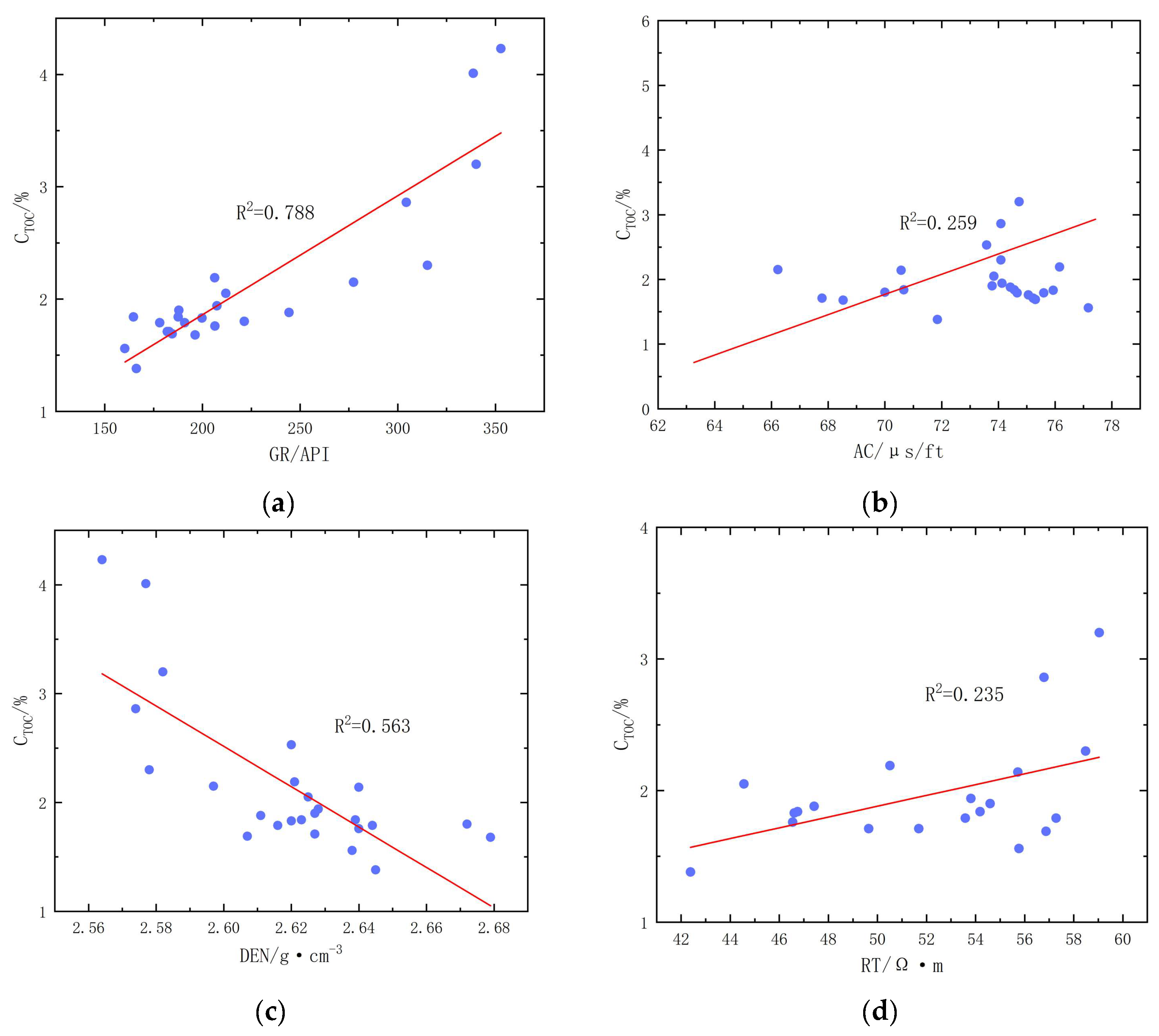
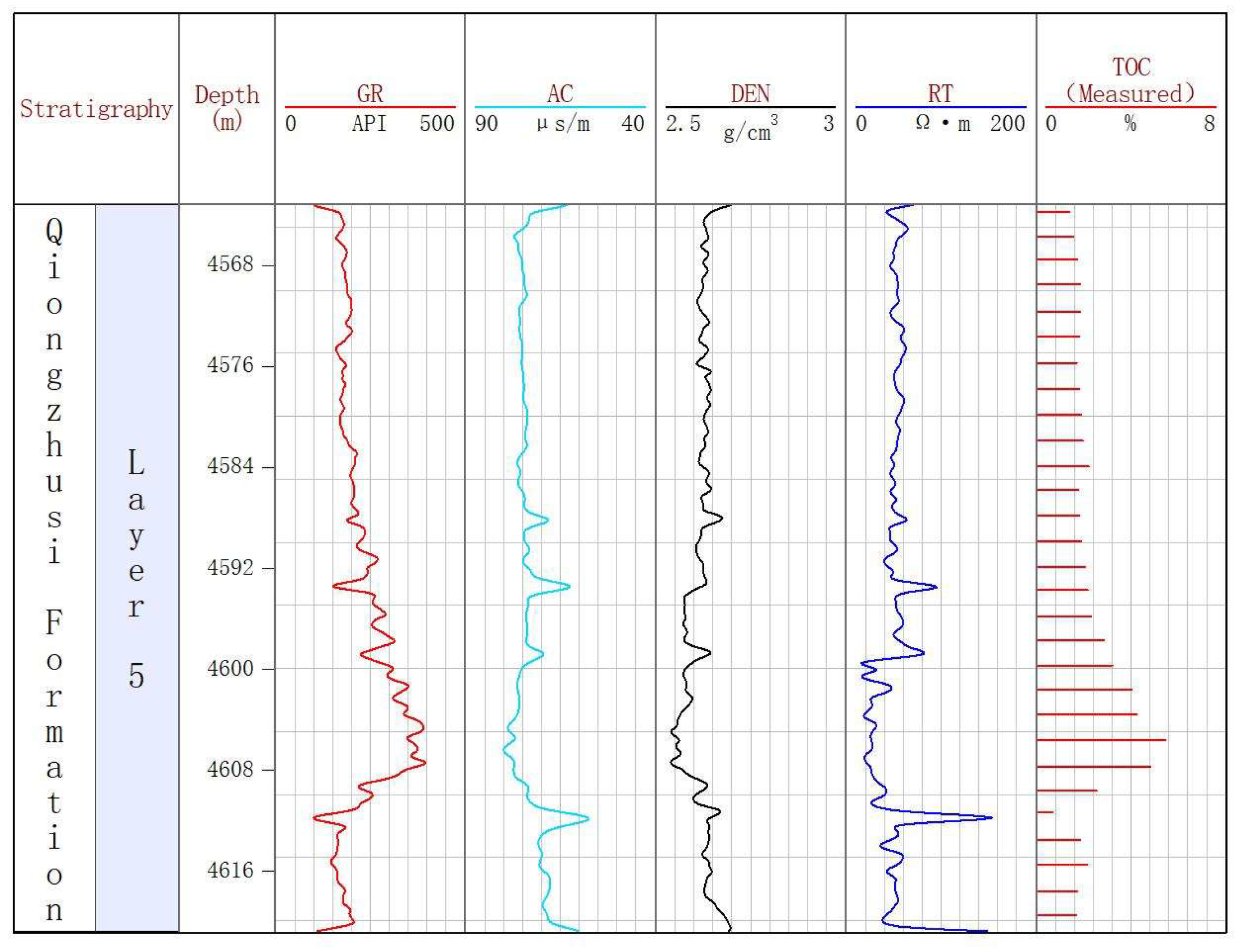
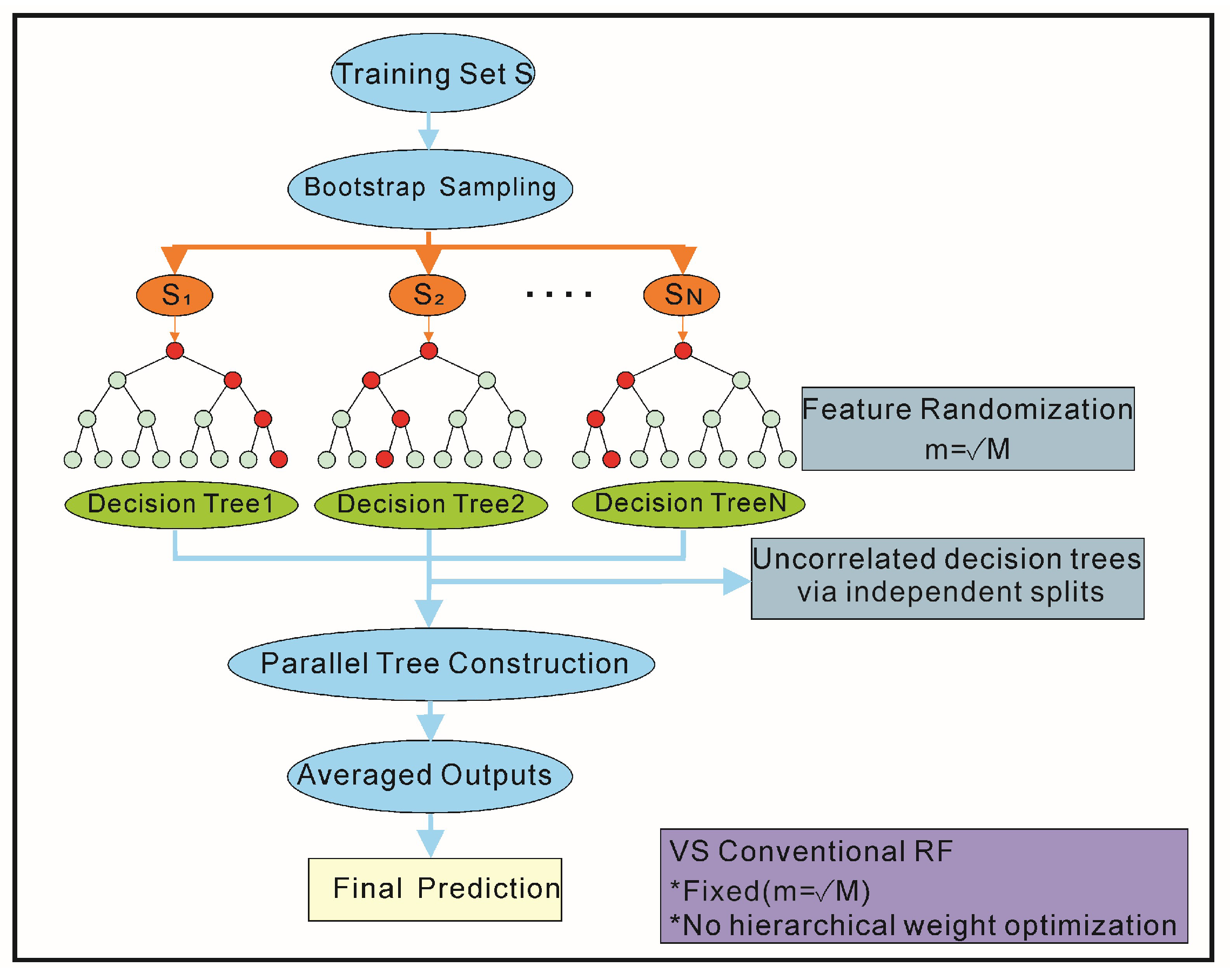

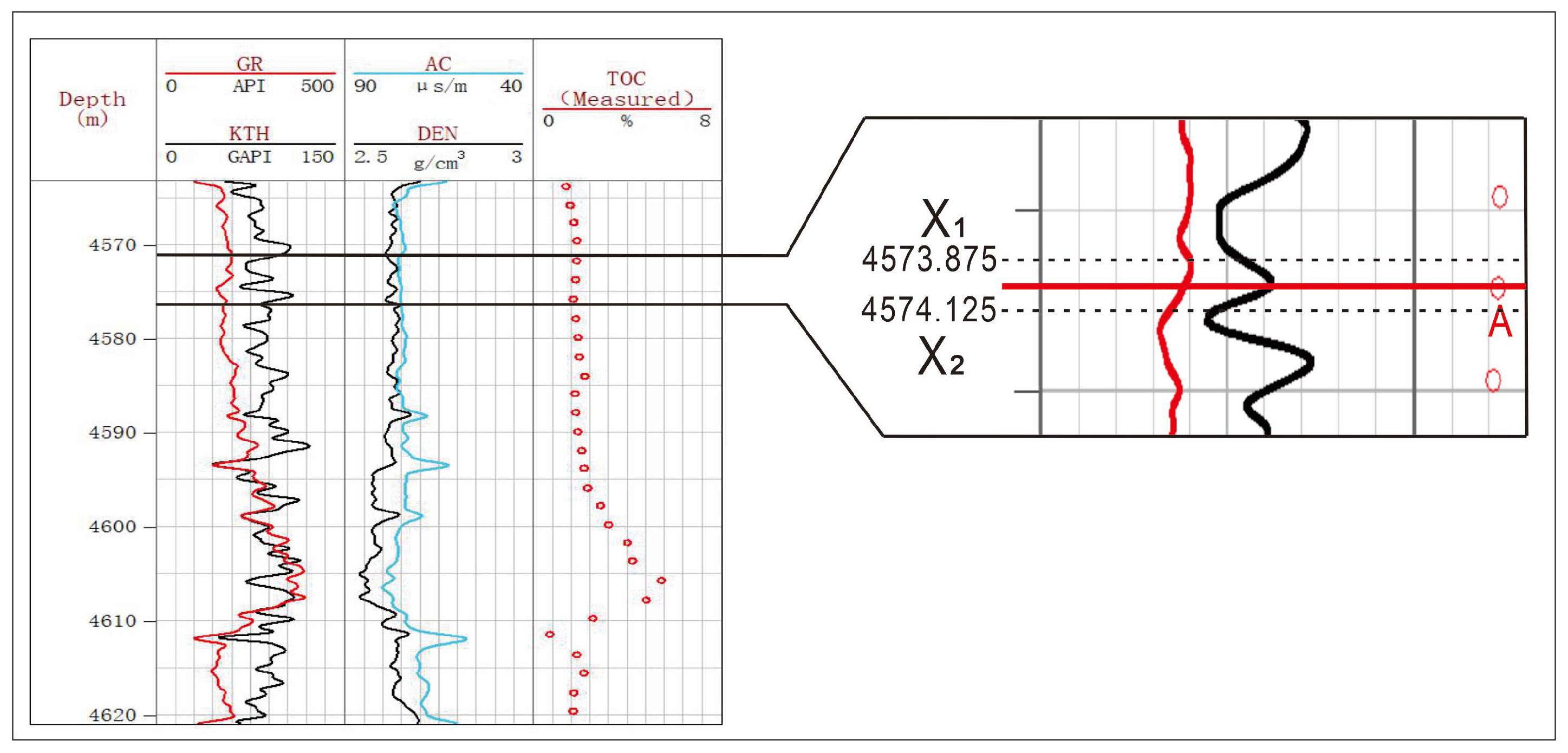
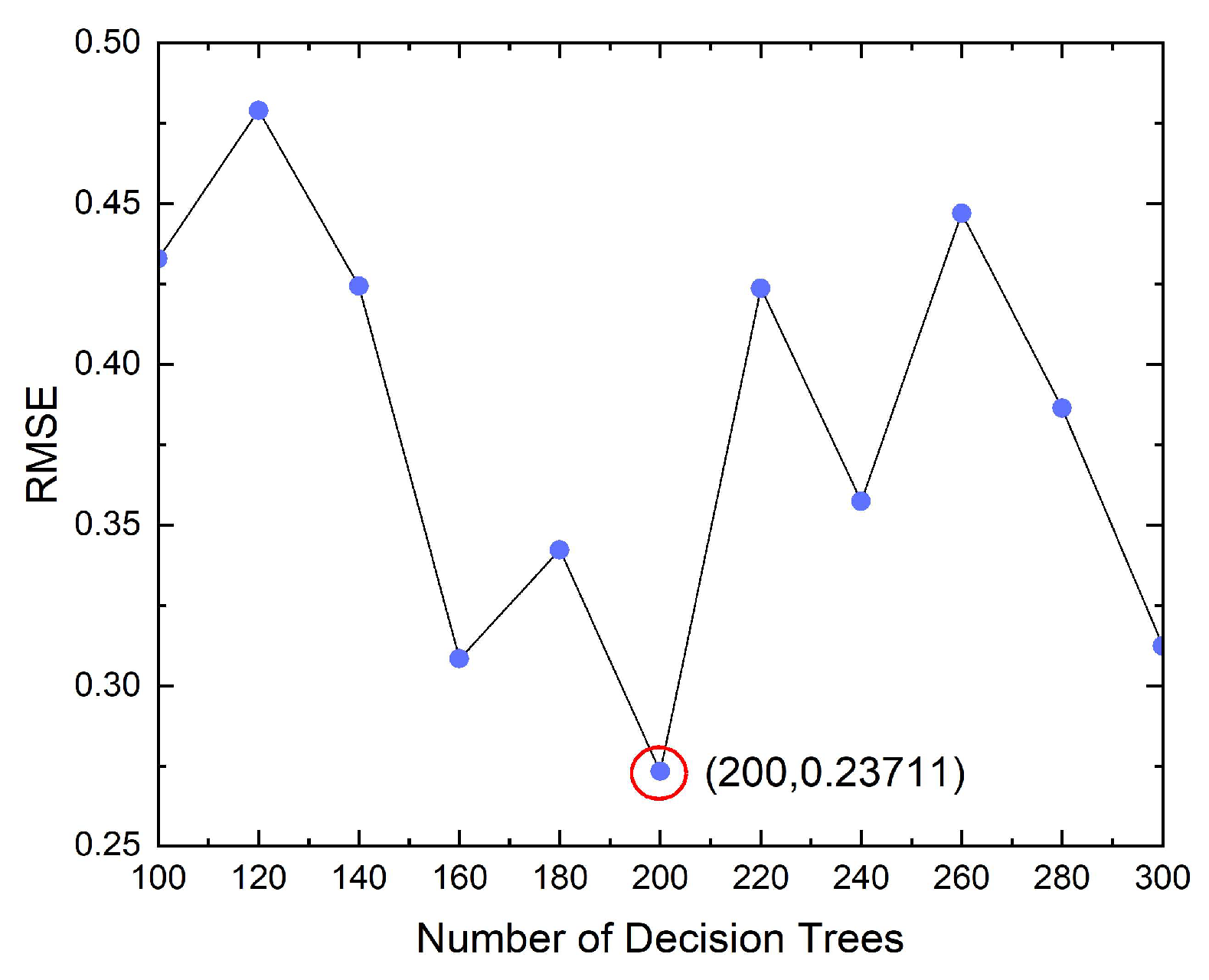
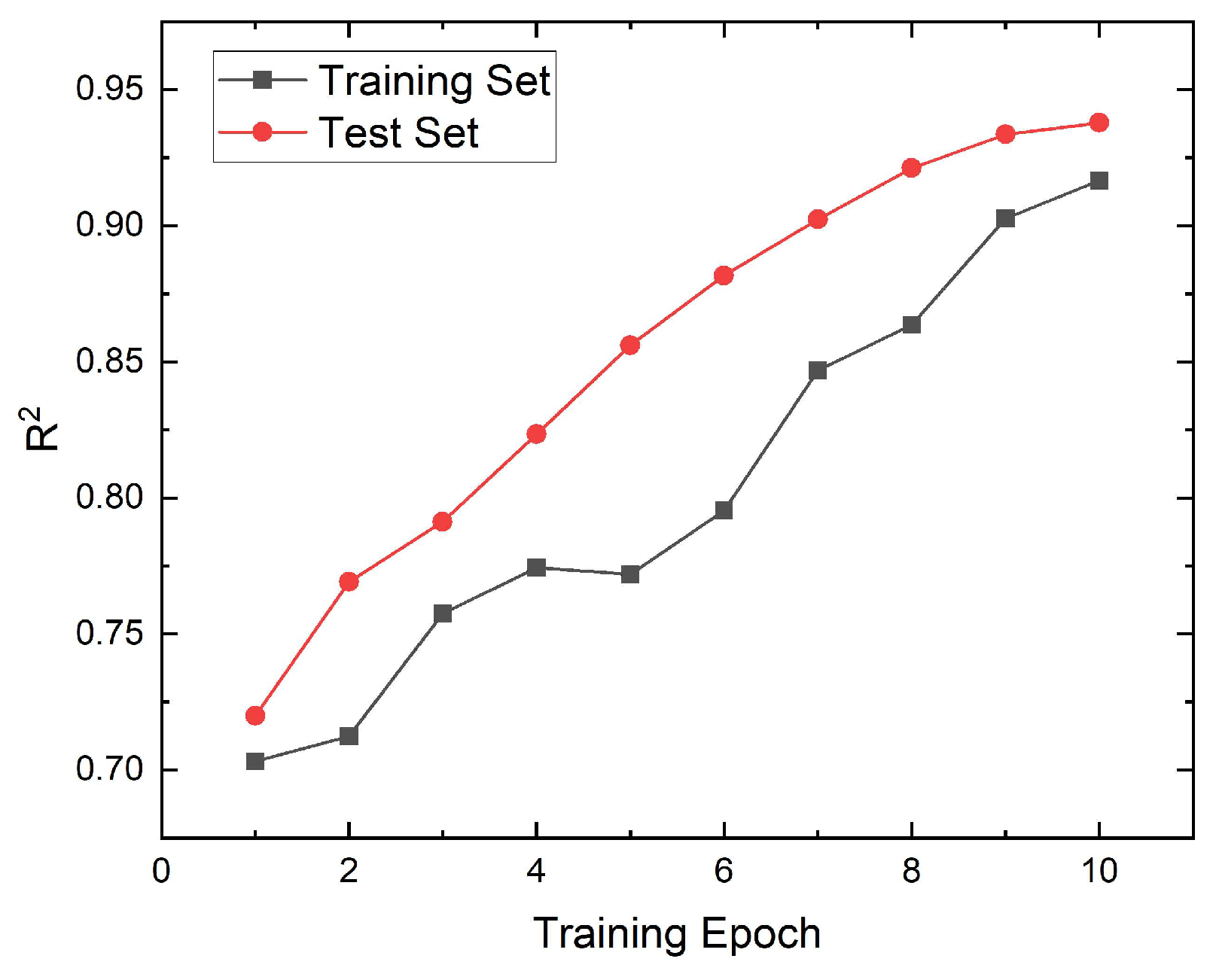


| Parameter | Pearson’s r | Spearman’s ρ | VIF |
|---|---|---|---|
| GR | 0.82 | 0.79 | 1.2 |
| DEN | −0.76 | −0.73 | 4.7 |
| AC | 0.58 | 0.52 | 4.7 |
| CNL | 0.31 | 0.28 | 2.1 |
| K | 0.18 | 0.15 | 1.1 |
| Th | 0.22 | 0.19 | 1.3 |
| U | 0.27 | 0.24 | 1.4 |
Disclaimer/Publisher’s Note: The statements, opinions and data contained in all publications are solely those of the individual author(s) and contributor(s) and not of MDPI and/or the editor(s). MDPI and/or the editor(s) disclaim responsibility for any injury to people or property resulting from any ideas, methods, instructions or products referred to in the content. |
© 2025 by the authors. Licensee MDPI, Basel, Switzerland. This article is an open access article distributed under the terms and conditions of the Creative Commons Attribution (CC BY) license (https://creativecommons.org/licenses/by/4.0/).
Share and Cite
Zheng, M.; Zhao, M.; Wu, Y.; Chen, K.; Zheng, J.; Tang, X.; Liu, D. Applicability of Machine Learning and Mathematical Equations to the Prediction of Total Organic Carbon in Cambrian Shale, Sichuan Basin, China. Appl. Sci. 2025, 15, 4957. https://doi.org/10.3390/app15094957
Zheng M, Zhao M, Wu Y, Chen K, Zheng J, Tang X, Liu D. Applicability of Machine Learning and Mathematical Equations to the Prediction of Total Organic Carbon in Cambrian Shale, Sichuan Basin, China. Applied Sciences. 2025; 15(9):4957. https://doi.org/10.3390/app15094957
Chicago/Turabian StyleZheng, Majia, Meng Zhao, Ya Wu, Kangjun Chen, Jiwei Zheng, Xianglu Tang, and Dadong Liu. 2025. "Applicability of Machine Learning and Mathematical Equations to the Prediction of Total Organic Carbon in Cambrian Shale, Sichuan Basin, China" Applied Sciences 15, no. 9: 4957. https://doi.org/10.3390/app15094957
APA StyleZheng, M., Zhao, M., Wu, Y., Chen, K., Zheng, J., Tang, X., & Liu, D. (2025). Applicability of Machine Learning and Mathematical Equations to the Prediction of Total Organic Carbon in Cambrian Shale, Sichuan Basin, China. Applied Sciences, 15(9), 4957. https://doi.org/10.3390/app15094957







